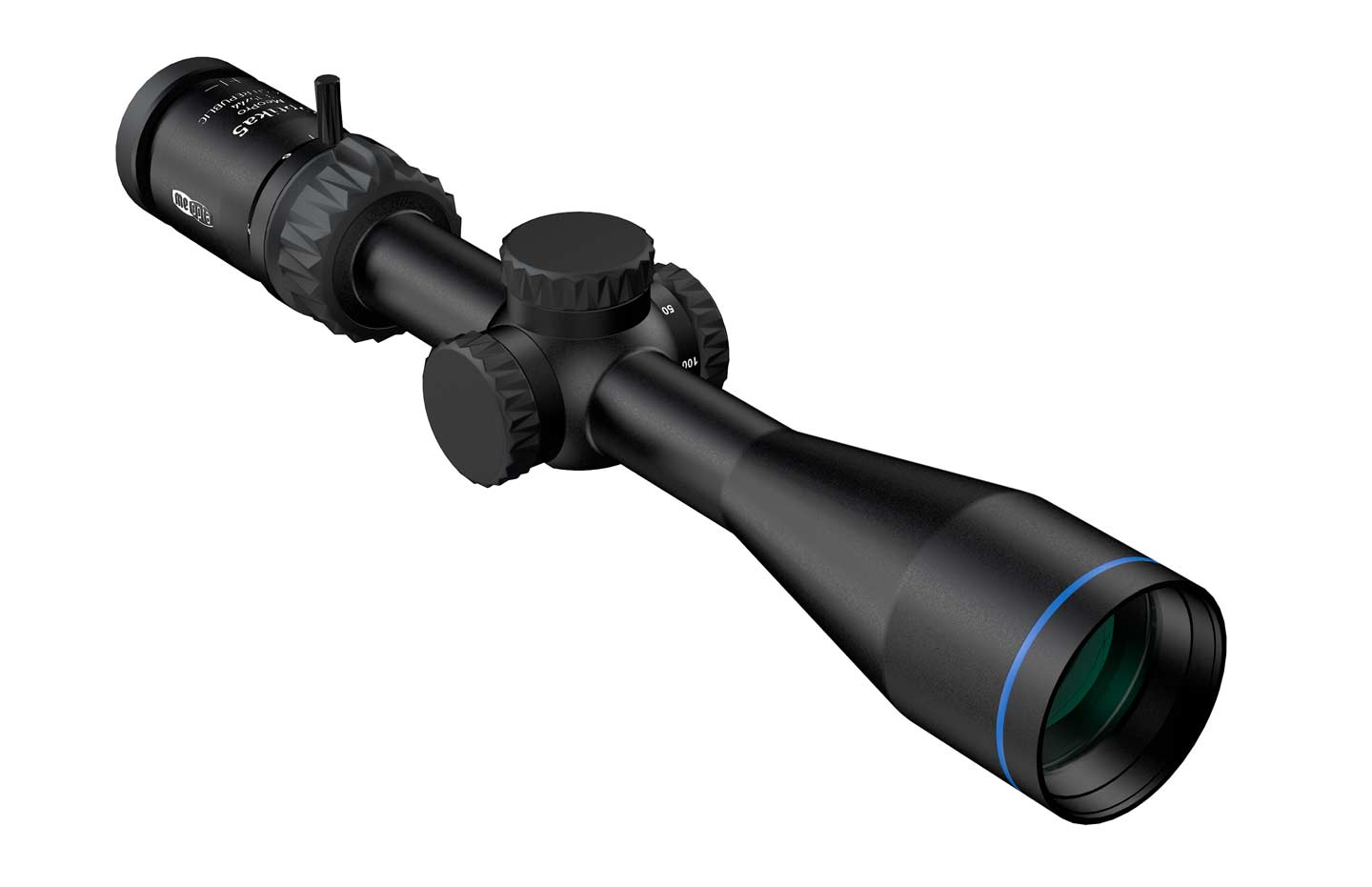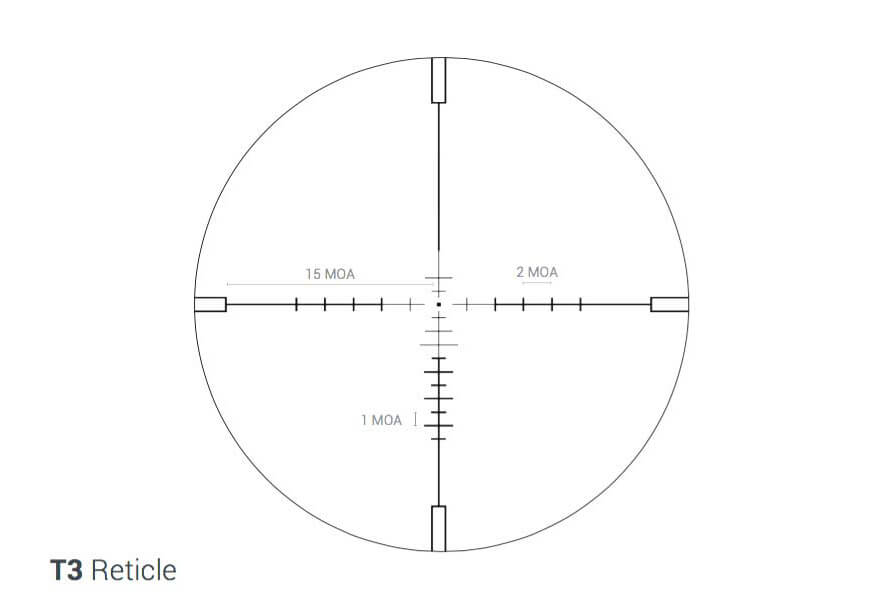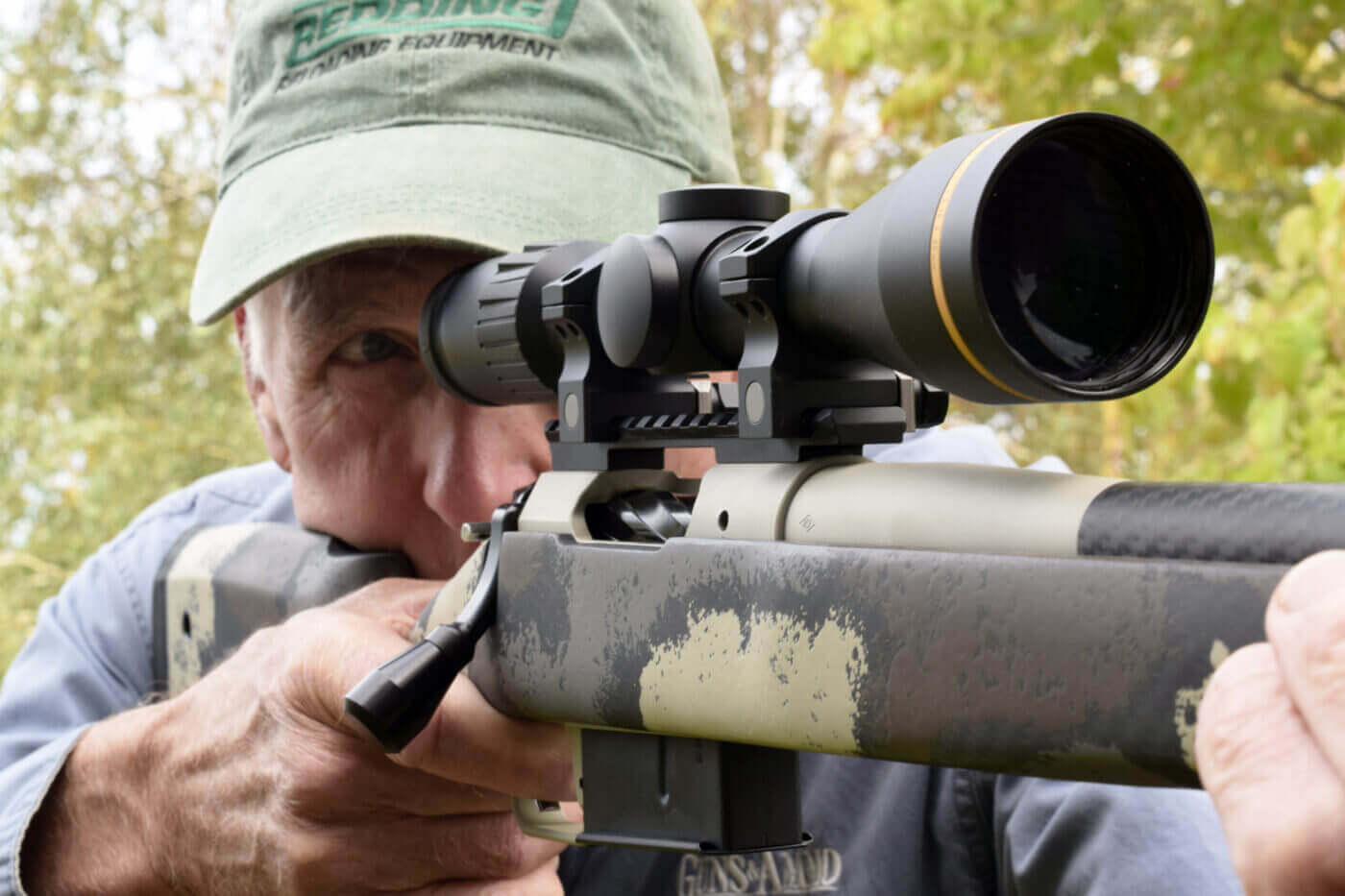By Richard Johnson
Riflescopes seem simple enough, but once you decide to buy one for your rifle you might be thrown off by all of the specifications and terminology. In this article, I will explain what’s behind the first focal plane vs second focal plane debate.
This will not be an “in the weeds” examination of the differences between first and second focal plane scopes. Rather, this is intended to be a short and sweet overview that will be easy to understand. By the end of this article, you should have a solid understanding of both scope types and which will make sense for your application.
Let’s dive in…
What Is a First Focal Plane Scope?
A first focal plane (FFP) scope is one in which the reticle appears to change size as you adjust the magnification. The reticle appears small when zoomed out and large when zoomed in.

The major advantage to this is that the magnification of the reticle and view remain the same so that your stadia marks are always relevant. A one mil mark in your crosshairs, for example, will stay constant throughout the range of magnification.
What Is a Second Focal Plane Scope?
A scope with a second focal plane (SFP) reticle does not keep a proportional size between the reticle and the view. In other words, the reticle size never appears to change. It is just as large zoomed out as it is zoomed in.

Second focal plane scopes are the easier of the two types to manufacture. Therefore, you will find more second focal plane scopes than first focal plane ones, and they will often be less expensive.
Pros and Cons
You should now have a pretty solid grasp on the basic difference between first and second focal plane scopes. Let’s look at the pros and cons of each to better understand which one might be best suited for your shooting needs.
Since a first focal plane reticle remains proportional to the image, you can engage a target at any magnification and your reticle’s markings remain accurate. The obvious upside is you can accurately engage your target at any magnification without making adjustments to the scope.
While this can be a major advantage when you need to make a shot and are under time constraints, it comes at a price. When zoomed out, the reticle may appear too small to be of much use. Likewise, when at maximum magnification, the edges of your reticle may be out of view.
Alternatively, a second focal plane scope maintains a single size of reticle throughout the magnification range. If you are running a 3x-9x scope, the reticle will appear to be the same size at 3x and at 9x even though the image increased in size.

The downside to the second focal plane scope is you can only use the stadia marks accurately at a single point of magnification. Typically, this is at the maximum magnification. In practice this means with a SFP scope, two stadia marks to the left at 3x does not mean the same thing as two stadia marks to the left at 9x.
On the other hand, the center of the crosshairs will always be on target regardless of the magnification. As long as you are able to apply some Kentucky windage at a low magnification setting, you will still be able to place an accurate round. However, for long ranges, the second focal plane scope will often take a shooter more time to make his adjustments and ensure the round is on target.
Second focal plane scopes are easier to manufacture. As a consequence, more companies – especially newer ones – seem to focus much of their manufacturing on SFP scopes. For the consumer, this means that SFP scopes tend to be easier to find and represent a significant cost savings.
First focal plane scopes tend to require additional engineering during the manufacturing process. This can add time and money to the production of a FFP scope. Consequently, fewer are on the market, and they tend to be more expensive.
First vs. Second: Which Is Better?
You might be asking yourself which of the two scope types is better. There is no easy answer to this question, and you should consider the kind of shooting you do to find the best match to your needs.
Hunters often leave a variable power scope zoomed out for an improved field of view or for an animal that pops up close by. When a game animal is spotted, the hunter can zoom in if there is time. Many times a hunter will need to make a quick shot at low magnifications.
With a FFP scope, the reticle may be far too small for a hunter to get a clear aiming point at short ranges. A SFP scope will often offer a better aiming point for the close shots. For this reason, I equipped my Springfield Waypoint with a 3-9x second focal plane scope.

Likewise, a casual or recreational shooter is likely to appreciate the cost savings a second focal plane scope offers. Not under any time pressure, they can make whatever adjustments they might need should they shoot at a low to medium magnification.
On the other hand, a FFP scope will generally give a shooter an advantage when shooting at longer distances and with magnifications below the maximum. For a competition shooter that might need to engage three targets at varying distances with a high-power optic dialed down to 2/3 of maximum magnification, the FFP scope will allow for rapid and precise engagement of all targets.
So, is a first focal plane scope better than a second focal plane scope? Not necessarily. Each shooter needs to determine his own needs and find an optic that fits those requirements. Both kinds of scopes have their own sets of pros and cons.
Join the Discussion
Go to forum













